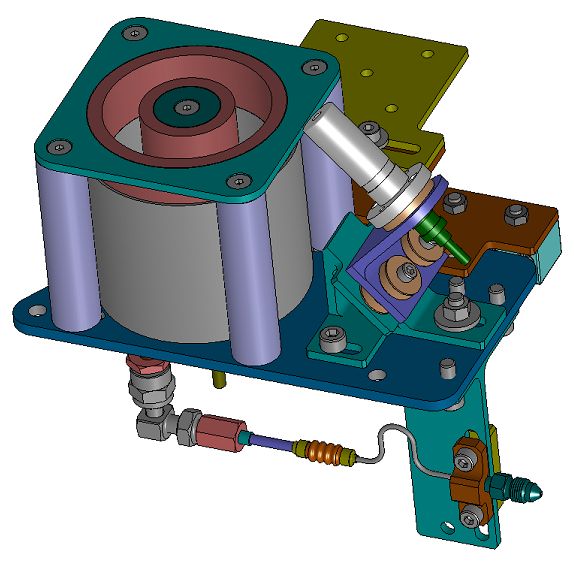Technion Researchers Develop Revolutionary Electric Rocket Engine for Small Satellites

Researchers from the Technion’s Asher Space Research Institute have developed a revolutionary electric rocket engine for small satellites called “CAMILA” (Co-axial Magneto-Isolated Longitudinal Anode). This engine belongs to a group called Hall thrusters, which are increasingly being used in satellites. The Technion has registered a patent on this development, which has already been presented at two international conferences and has aroused great interest. The engine’s working principle is based on ionizing (extracting electrons from atoms) of fuel (xenon gas) and accelerating it in electric and magnetic fields towards the exhaust.
The Technion’s Asher Space Research Institute has established a special laboratory for electric propulsion, which deals with developing these engines.
Dr. Alexander Kapulkin of the Asher Space Research Institute invented the innovative engine. Dr. Kapulkin was a Ph D-student of Prof. Alexei Morozov from the Atomic Energy Institute in Moscow, who was one of the developing fathers of the electric rocket engine in the world. Dr. Kapulkin is the former head of the Physics and Engineering Laboratory and professor in the Aerospace Engineering Faculty at the University of Dnipropetrovsk in the Ukraine. He repatriated to Israel in 1999 and joined the Technion in 2000 as a senior researcher.
The researchers explain that in a regular rocket engine (chemical fuel engine) gas exhaust speed does not exceed 4-5 kilometers per second, while the speed range of gas exhaust in an electric rocket engine is greater. This speed depends on the satellite mission and there is an “optimal exhaust gas speed.” Today, the optimal speed of the electric rocket engine in most satellites is some 20 kilometers per second. The resulting high speed in these engines enables decreasing the amount of fuel needed to carry out space missions and therefore the satellite mass, and eventually to reduce launch cost. Most satellites launched today are small satellites which require for their operation a small electric rocket engine with a low supply like the ones developed at the Technion.
In the engine developed at the Technion, there are three special changes that do not exist in other Hall thrusters:
- The anode configuration is changed significantly. With the regular Hall thruster, the anode work area is perpendicular to the engine axis. In the CAMILA, it is parallel.
- Fuel supply (xenon gas) is not carried directly through the anode but through a special gas distributor which is isolated from contact with the anode.
- In Hall thrusters existing today, the magnetic field is closer to the radial form (perpendicular to the engine axis) but in CAMILA the magnetic field has a special, much more complex configuration. In the area of ion acceleration (engine exit) the magnetic field is radial and on the other side, which is within the anode (ionization area) – the magnetic field is parallel to the engine axis.
These significant changes prevent ion loss into the engine walls, thus increasing engine efficiency.
Because of the changes made to the Hall thruster by the Technion researchers, fuel consumption is less and this enables more efficient use of the Hall thrusters in satellites. The Hall thruster developed at the Technion is intended, first and foremost, for the Israeli satellite industry.


